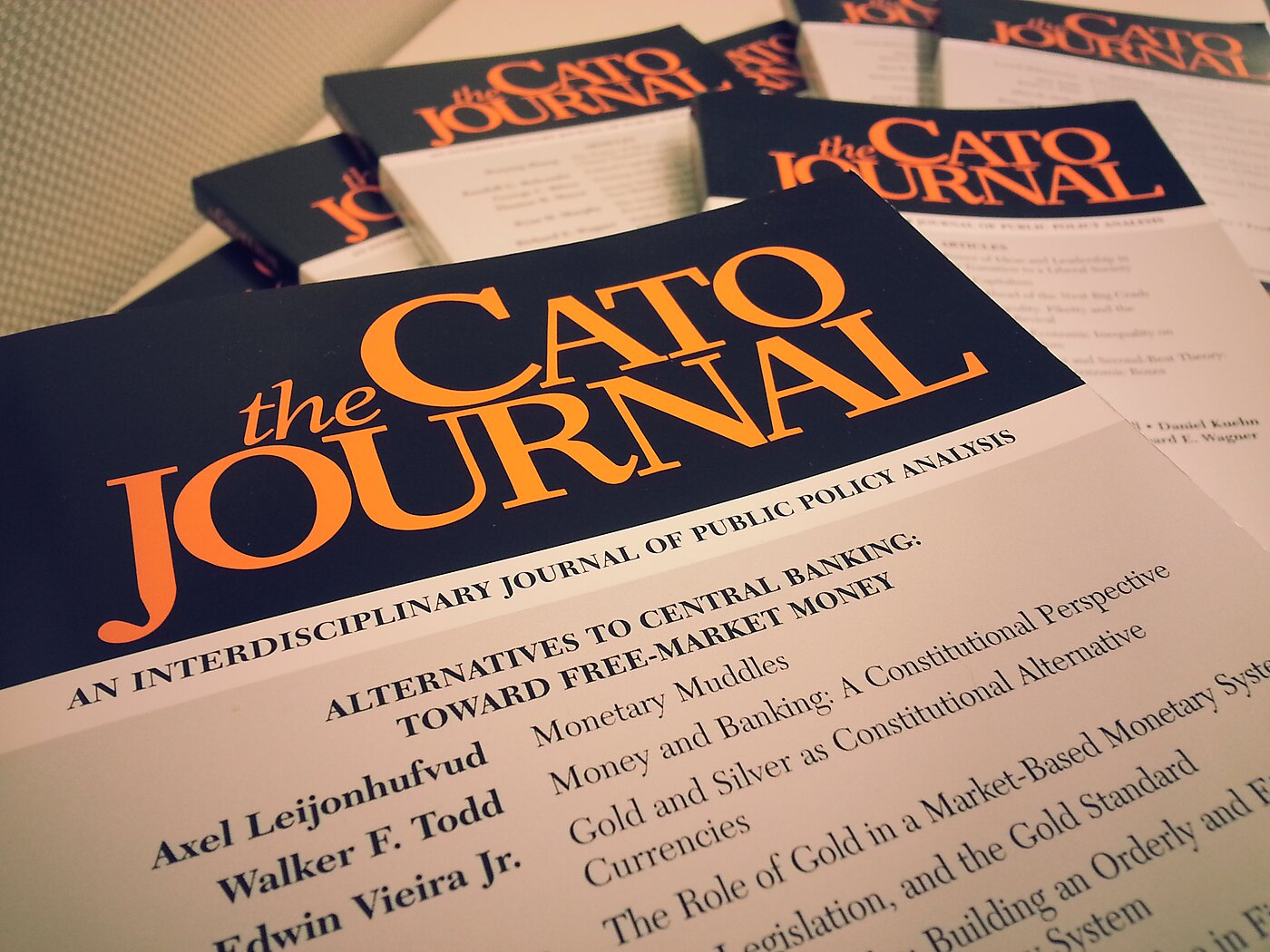So it’s only natural to ask whether we could do better. Could a rules-based, free-market monetary system—one which is spontaneous, self-regulating, and independent of government meddling—serve us better than the existing fiat standard? And if that’s the case, how could we get from here to there?
The latest issue of the Cato Journal, containing the proceedings of Cato’s 32nd Annual Monetary Conference: Alternatives to Central Banking: Toward Free-Mark Money, addresses these very questions. Its papers examine the constitutional basis for alternatives to central banking, the role of gold in a market-based monetary system, the obstacles to fundamental reform and how they might be overcome, the advent of cryptocurrencies, and much else besides. Highlights from the conference proceedings include Axel Leijonhufvud’s look at expansionary monetary policy’s effects on resource allocation and the distribution of income, Norbert Michel’s strategy for implementing a rules-based monetary framework, and the very different views of Edwin Viera Jr., Jerry L. Jordan, and George Selgin concerning the prospects for a revived gold standard.
In addition to the conference proceedings the issue features original articles by Peter Bernholz on the de-pegging of the Swiss Franc, and by Tyler Watts and Lukas Snyder on the resource costs of irredeemable paper money.
Here is a complete listing of the articles:
- Monetary Muddles by Axel Leijonhufvud
- Money and Banking: A Constitutional Perspective by Walker F. Todd
- Gold and Silver as Constitutional Alternative Currencies by Edwin Viera Jr.
- The Role of Gold in a Market-Based Monetary System by Jerry L. Jordan
- Law, Legislation and the Gold Standard by George Selgin
- Fix What Broke: Building an Orderly and Ethical International Monetary System by Judy Shelton
- Transitioning Standards of Value in Fixed-Value Monetary Systems by Nathan Lewis
- An Agenda for Monetary Action by James Grant
- A Roadmap to Monetary Policy Reforms by Norbert Michel
- A Private Committee for Monetary Reform: Process and Substance by Gerald P. O’Driscoll Jr.
- The Bitcoin Revolution by Bennett T. McCallum
- Bitcoin Will Bite the Dust by Kevin Dowd and Martin Hutchinson
- The Market for Cryptocurrencies by Lawrence H. White
- The Swiss Experiment: From the Lower Bound to Flexible Exchange Rates by Peter Bernholz
- Current Evidence on the Resource Costs of Irredeemable Paper Money by Tyler Watts and Lukas Snyder
The Cato Journal, a valuable resource for public policy scholars that’s also accessible to the non-specialist reader, is published three times a year: Spring/Summer, Fall, and Winter. To subscribe, please visit the Cato Institute’s online store.


